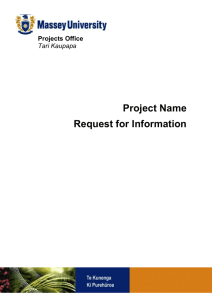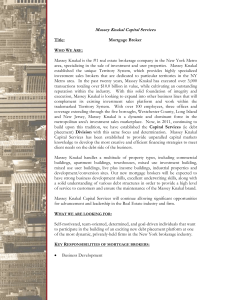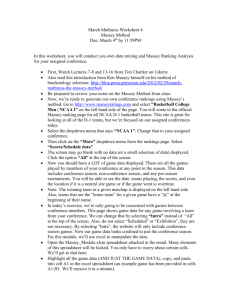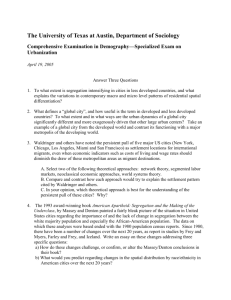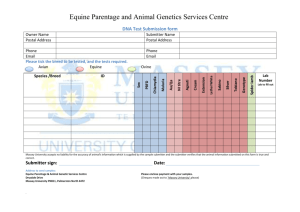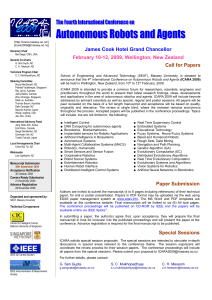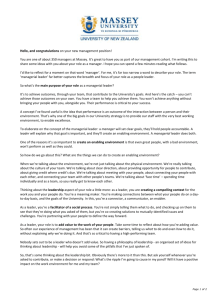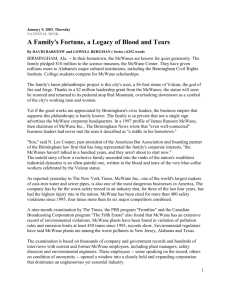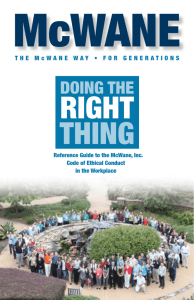A Second on Safety The Massey Energy Disaster
advertisement
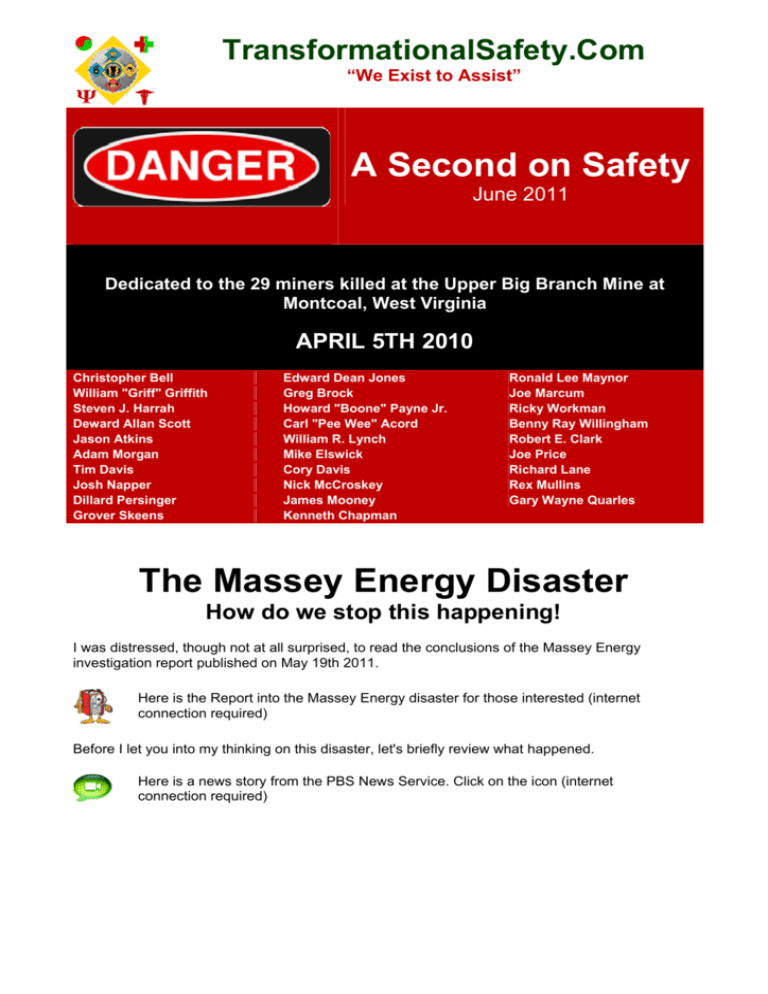
TransformationalSafety.Com “We Exist to Assist” A Second on Safety June 2011 Dedicated to the 29 miners killed at the Upper Big Branch Mine at Montcoal, West Virginia APRIL 5TH 2010 Christopher Bell William "Griff" Griffith Steven J. Harrah Deward Allan Scott Jason Atkins Adam Morgan Tim Davis Josh Napper Dillard Persinger Grover Skeens Edward Dean Jones Greg Brock Howard "Boone" Payne Jr. Carl "Pee Wee" Acord William R. Lynch Mike Elswick Cory Davis Nick McCroskey James Mooney Kenneth Chapman Ronald Lee Maynor Joe Marcum Ricky Workman Benny Ray Willingham Robert E. Clark Joe Price Richard Lane Rex Mullins Gary Wayne Quarles The Massey Energy Disaster How do we stop this happening! I was distressed, though not at all surprised, to read the conclusions of the Massey Energy investigation report published on May 19th 2011. Here is the Report into the Massey Energy disaster for those interested (internet connection required) Before I let you into my thinking on this disaster, let's briefly review what happened. Here is a news story from the PBS News Service. Click on the icon (internet connection required) A Second on Safety – June 2011 Massey Energy Disaster - How do we stop this happening! The conclusions were damning. Even before they were reached, senior executives of Massey Energy were actually charged by the US Federal Bureau of Investigation (FBI) for lying and obstructing justice in the investigation of the West Virginia coal mine. This is a company that literally had thousands of safety violations. There were over five hundred on the Upper Big Branch site alone - I can hear the ghosts of Texas City (BP) workers at this point. You might be asking the question, and I hope you are, - why were they allowed to operate? Consider an answer and we'll' come back to it in a moment. It even inspired Woodie Guthrie to write a song about what happened. If you want to listen, click here. It reminds me though of the landmark PBS program, "It's a Dangerous Business". In that program we see that the McWane group were operating the most dangerous pipe foundries in the World. They had one site that had more safety violations than the rest of the industry combined - and they were allowed to operate! The McWane case study is so significant and powerful that I developed the Beyond Compliance safety seminar series around it. Here is a link to the PBS website where you can watch the full production on-line. So why were the allowed to operate? This is a question that has been quite directly dealt with. The US Department of Labour (in the form of the Mine Safety & Health Administration) has been found to be incompetent with regard to fulfilling its oversight responsibilities. This conclusion takes on ever more "weight" when we look at the author of the independent investigation report. The investigation team was led by Davitt McAteer, former Assistant Secretary of Labor in charge of the Mine Safety and Health Administration under President Clinton - in other words this was a work environment in which the author had a unique understanding etc. It just so happens that very similar findings were indicated when considering the McWane case as well - and that was almost a decade ago. I have written previously about the entropic nature of safety systems. That being said, if there is no "regulation", and enforcement of that regulation, safety systems are going to degrade - and they demonstrably do. In my view that situation can only be avoided when a business has a powerful and resilient positive safety culture. Sadly, we do not see that too often. Another crucial feature is consistent and positive safety leadership. Both critical elements were visibly absent within the operations of Massey Energy. This was an extreme case, where production was unbelievably placed above all living things. When I first read what was going on, I did not believe it (and I've seen a bit in my time 'on the tools'). I had to go and confirm the information for myself. So what am I referring to? I am telling you that, at Massey Energy, senior executives were required to be advised of tonnage and metres gained every thirty (30) minutes. This went so far as the Office of the CEO (Don Blankenship). In my view this degree of "messaging" is criminal - and should be treated that way. Massey may have been claiming to have "safety" as a high priority (they spent a small fortune on marketing/safety videos ) - yet the clear message within all levels of the business was production, production, production. This was "known" by the Regulators and they did nothing! Regulators were even onsite on the day of the explosion. There should be little surprise that this Company found itself as the incubator of a positively awful workplace disaster. As recently as June 29th (yes, days ago) at a private briefing of Upper Big Branch relatives, the Mine Safety Authority (in trying to justify its own pathetic performance in this case) showed evidence of "fake" safety reports. Employees have confirmed that it was common practice to prepare two (2) reports. What should be really scary, is that Massey is not the first company to "doctor" documentation in order to deflect oversight. It is a far too common practice. I have actually had CEO's tell me "it's only a little fib, no-one got hurt by it". What is the message it sends though? Dishonesty and deception are corporate values within this business. In March of this year I was in London co-facilitating a Workshop for a global industry group, exploring the area of optimal leading indicators that might be used within their industry sector. During a session on safety metrics I made an observation specific to the Massey Energy disaster this was before the "report" was released. On the basis of a number of lagging safety indicators A Second on Safety – June 2011 Massey Energy Disaster - How do we stop this happening! Massey Energy had actually won multiple national safety awards - despite the fact that the company had recently killed 29 employees. One such award is known as the Bradbury Award. It is given for excellent performance in safety or so it seems. What we do see is a company that has a long history of safety violations, a proven track record of lying to regulators, a psychotic focus on production metres, can still the achieve perfect LTIFR results. It then wins a national award based on that metric alone. Imagine being a family member of one of those 29 dead miners seeing this company spuriiking its safety credentials. Now that the independent investigation report has been released we are seeing even more of the "laundry" being hung out to dry. Employees are lining up to tell their story. Before you start thinking it's a whole lot of disgruntled workers taking the chance to "kick the boss", nearly all of the stories being told are also able to be confirmed. There can be no doubt that this organisation created and powerfully promoted a toxic safety culture. So what do we do about it? We send people to prison! It is about time. Now this might seem like a rather harsh and autocratic opinion - and I suppose it is. By now though, we should be able to see that fines don't work. It seems that many see fines as a cost of doing business. There have even been cases where the annual budget has had a line item for "regulatory compliance" - this was code for "infringement fines". Consider BP as an example. When we take a closer look at the initial investigations into the Gulf of Mexico disaster it has been alleged that BP learnt very little from their experience being the custodian of the Texas City fatalities. What message does it send when Tony Howard (former BP CEO and steering the ship during that period) is given the "boot"; but with millions of pounds in his back pocket - whilst at the same time entire communities have literally been destroyed as a consequence of the environmental devastation. I appreciate there is the "beyond reasonable doubt" hurdle - and that is a significant one. Such is a challenge which also demands attention. To say it is all too hard, shall only result in more people in pine boxes. Consider this. Last night on the local news I heard of a guy who assaulted his neighbour. What happened was that it was the 1st anniversary of the death of his young daughter in a house fire, I know about this one, as I was called in to conduct the Critical Incident Debrief for this horrendous nightmare - I can tell you, I shed some tears that night. Anyway, the father was sitting in his house listening to a piece of music that was one of his daughters favourites. Neighbour comes and knocks on the door and tells him to "turn that **(&* music down". After a heated discussion an assault takes place. Result: Father to be sentenced next week. Consider this. A guy is sitting at the local hotel/bar having a few beers alone. He is lonely. His divorce papers were served on him earlier in the day. He knows he's maybe had one too many drinks. It's only two km's home so he decides to take the risk and drive. As he accelerates out of the driveway he hits a young triathlete out doing his training. Kid is killed. Result: Three years gaol. It is now time that, as a community, we hold our workplaces to the same level of expectation as we do our domestic situations and our vehicular responsibilities. In the two examples cited above I am sure many of us can appreciate, at least to some degree, where those guys were at. When it comes to the drink driving scenario above, there was no "intent" to harm anybody; yet that guy shall be spending a few years locked up. The same could be said for corporate executives who make direct decisions which significantly contribute in the death of employees. Of course there was no "intent". I would argue though there may well be "foreseeability" in some of these circumstances. It shall be up to the Courts to determine the "measure" against which to make such determinations. A far from ideal solution. What we can say with some certainty is "If you do what A Second on Safety – June 2011 Massey Energy Disaster - How do we stop this happening! you've always done, you'll get what you've always got". In this case what we keep getting is bodies! Do we understand where corpoatre executives are "at" when they actively promote cultures that are toxic. Sure "cooking the books" is a serious offence. Sure "telling porkies" to federal investigators is a serious offence. Yet until we start seeing serious breaches of safety being dealt with in like manner to the neighbourly assault etc we are going to continue to see people being unnecessarily killed. As long as profit and production focused organisations continue to see no "consequences" then I am of the view that not much is going to change. Let me finish by asking you just one simple question. Do you truly know what the Safety Culture is like within your organisation? Actually let me add one more. If you do know, what have you done about it? It is the answers to these questions that shall likely determine whether people live or die. Worth a thought? David G Broadbent Safety Psychologist TransformationalSafety.Com
